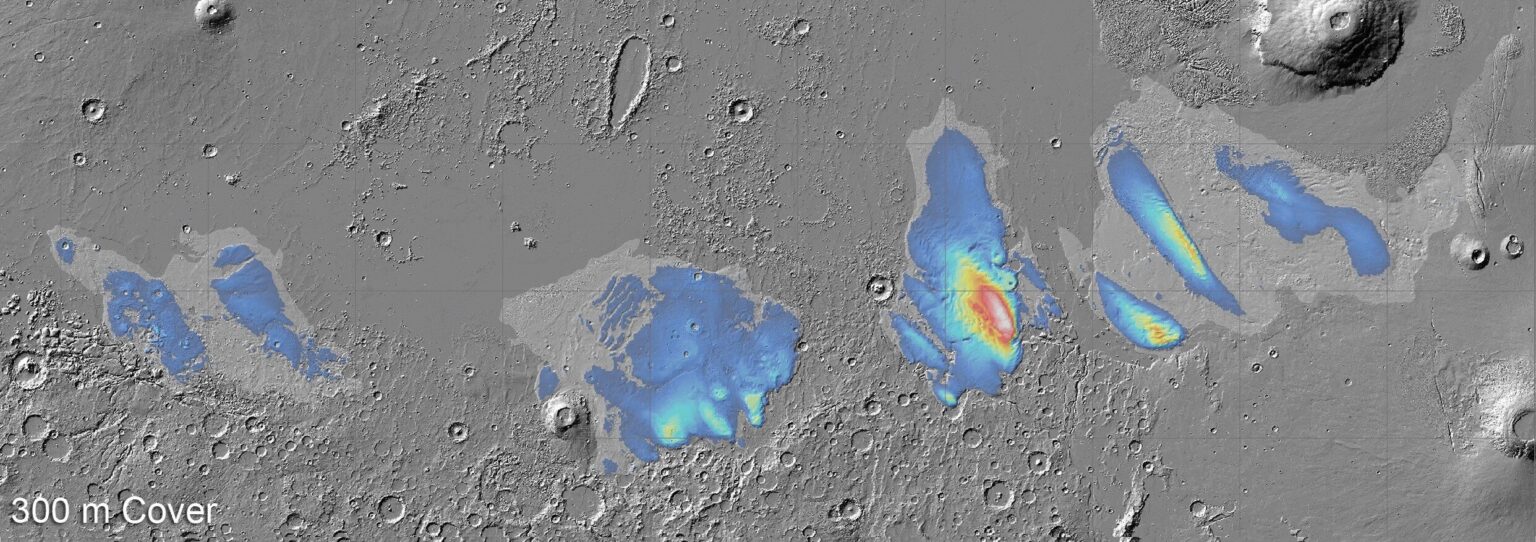15 years ago, the Mars Express spacecraft discovered large deposits of unknown material under the Medusae Formation on Mars. Now scientists have established that this is nothing but water ice, and it is very important for the future colonization of the Red Planet.

Water ice reserves on Mars
Scientists have returned to studying one of the most mysterious features of Mars, which was once discovered by the Mars Express spacecraft. The results of its research indicate layers of water ice extending several kilometers underground. These are the largest reserves of water ever found on this part of the planet.
More than 15 years ago, Mars Express explored the Medusae Fossae Formation, finding massive deposits at depths of up to 2.5 km. It was unclear from these early observations what it was, but now an explanation has finally been found.
“We’ve explored the MFF again using newer data from Mars Express’s MARSIS radar, and found the deposits to be even thicker than we thought: up to 3.7 km thick,” says Thomas Watters of the Smithsonian Institution (USA), lead author of the scientific study. “Excitingly, the radar signals match what we’d expect to see from layered ice, and are similar to the signals we see from Mars’s polar caps, which we know to be very ice rich.”
Medusae Fossae Formation
If the ice trapped in the Medusae Fossae Formation melts, it will cover the entire planet with a layer of water from 1.5 to 2.7 m deep. This is the largest amount of water ever found in this part of Mars, and it would be enough to fill the Red Sea on Earth.
This region consists of several wind-sculpted features, hundreds of kilometers in diameter and several kilometers in height. Located on the border between the Martian highlands and lowlands, they are one of the largest sources of dust on Mars.
Initial observations from Mars Express showed that MFF is relatively transparent to radar and has a low density — both characteristics that we see in ice deposits. However, scientists do not rule out that these features are actually giant accumulations of dust, volcanic ash or sediment lifted by the wind.
Instead, the new results indicate layers of dust and ice that hide under a protective layer of dry dust or ash several hundred meters thick.
Future research and collaboration
Although Mars now appears to be an arid world, the planet’s surface is full of signs that there was once a lot of water. We have also discovered significant ice reserves on Mars, such as huge polar caps, buried glaciers closer to the equator, and near-surface deposits penetrating the soil of the Red Planet.
Huge ice reserves near the equator, such as those suspected to be hiding under the dry surface of the Medusae Fossae Formation, could not have formed in the conditions of the modern climate of the planet. They should have been formed in the previous climatic epoch.
The volume and location of these ice deposits in the Medusae Fossae Formation also make them potentially very valuable for our future exploration of Mars. Missions to the Red Planet are expected to land near the equator, away from ice-rich polar caps or high-latitude glaciers. And they will need water as a resource — therefore, searching for ice in this region is essential for human missions on the planet.
According to phys.org
Follow us on Twitter to get the most interesting space news in time
https://twitter.com/ust_magazine


